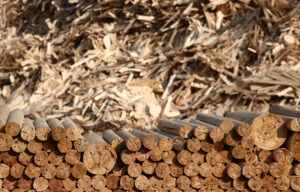UK waste wood market thrives in 2024

Out of 4.5 million tonnes of waste wood arising across the country, 4.33 million tonnes were successfully diverted from landfill and informal disposal.
The overall recovery rate was broadly in line with the previous year’s figure of 97%, although the true percentage may be marginally higher due to a dip in construction activity, which typically contributes significantly to waste wood volumes.
Large-scale biomass once again emerged as the primary destination for recovered wood, using 2.8 million tonnes - around 65% of all processed waste wood.
The panel board manufacturing sector remained the second largest user, processing over 920,000 tonnes, although this represented a 4.5% decrease year-on-year due to economic pressures and the closure of a major production facility.
Other recycling and reuse outlets—including applications such as animal bedding, equine surfacing and landscaping - fell to 310,000 tonnes, marking an 11% decline.
This drop was attributed to reduced demand for poultry bedding following outbreaks of avian flu, as well as ongoing weaknesses in the construction sector affecting reuse.
Despite these falls, activity in other reuse areas increased, with more pallet refurbishment and community-level reuse via local authority hubs. Although not formally included in the figures, the WRA aims to incorporate these streams into future reporting to better reflect the full scope of reuse taking place across the UK.
Trade in waste wood also grew modestly, with net exports rising by 2.8% to approximately 211,000 tonnes, or 5% of the market, driven by strong demand for biomass feedstock in Europe. Meanwhile, the small-scale biomass sector remained stable, consuming around 90,000 tonnes of waste wood during the year.
Julia Turner, Executive Director of the WRA, said the data showed a balanced, environmentally responsible industry operating at scale across the UK.
She emphasised that the sector plays a vital role in advancing the circular economy, reducing reliance on landfill, and supporting the country’s net zero ambitions. Turner also called on the Environment Agency to ensure its new Regulatory Position Statement (RPS 352) is flexible enough to allow for compliant and safe storage of waste wood over summer months, in order to secure adequate supply during the winter heating season.
In addition to the material recovery data, the WRA also released the sector’s latest carbon savings figures. These show that the UK panel board sector sequestered 1.09 million tonnes of carbon in 2024 through the use of recycled wood in chipboard manufacturing.
Meanwhile, biomass energy production from waste wood delivered carbon savings of 701,000 tonnes compared to fossil fuel alternatives, with the potential to rise to 3.6 million tonnes annually if carbon capture and storage (CCS) is adopted more widely.
Turner highlighted the combined environmental benefits of biogenic energy and circular material use, stating that the sector’s carbon-saving impact could grow even further with the inclusion of figures from pallet reuse and other recycling streams in the future.

















